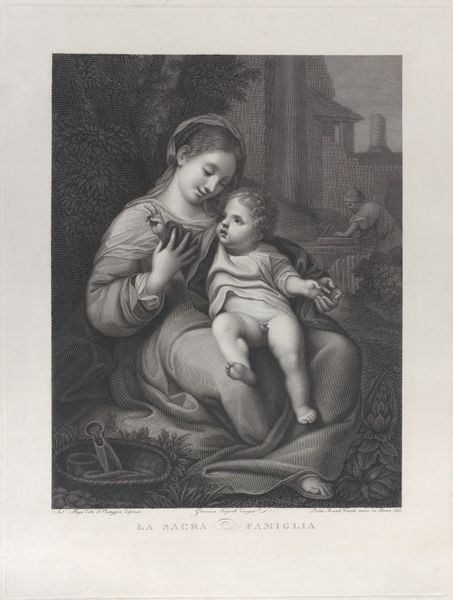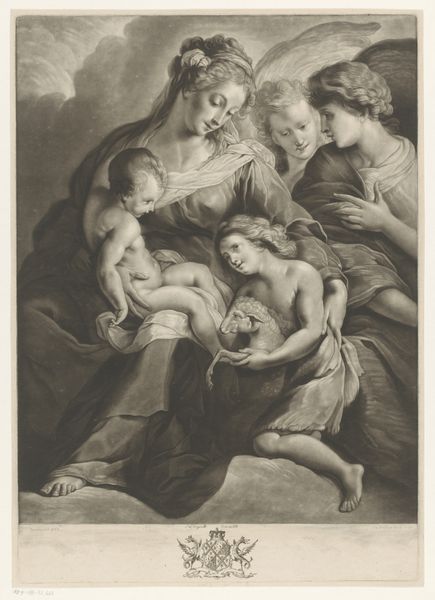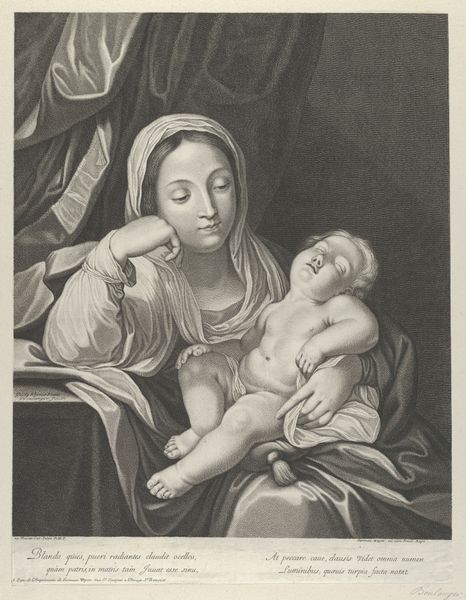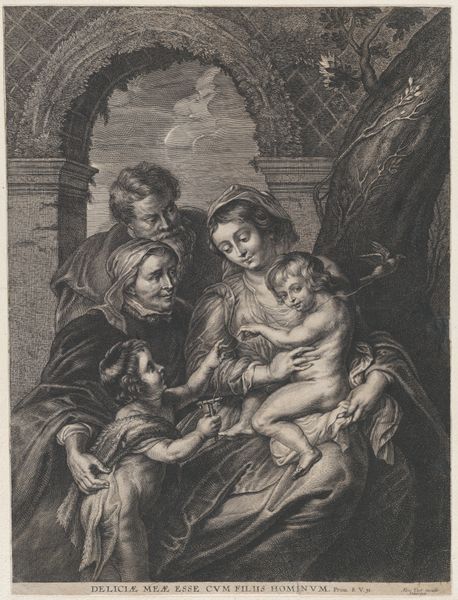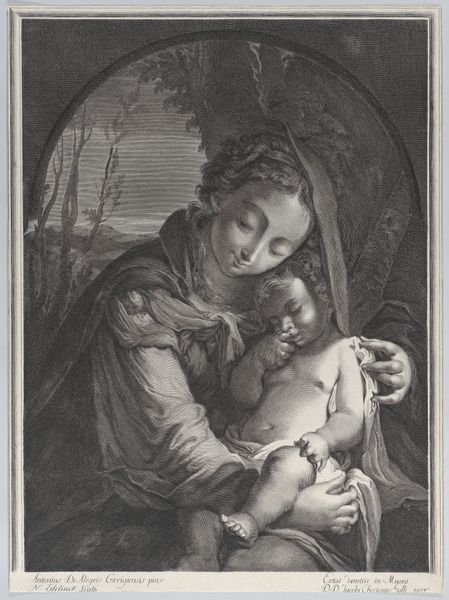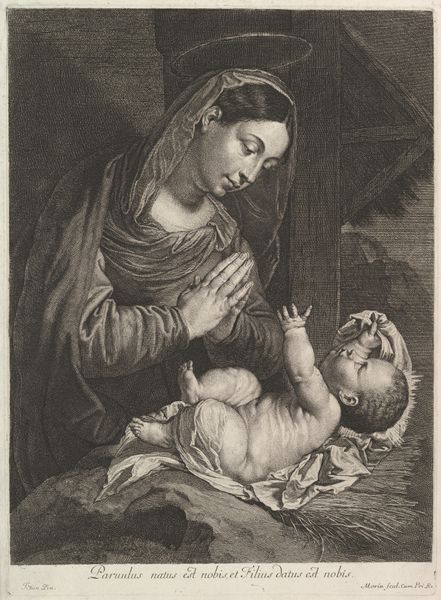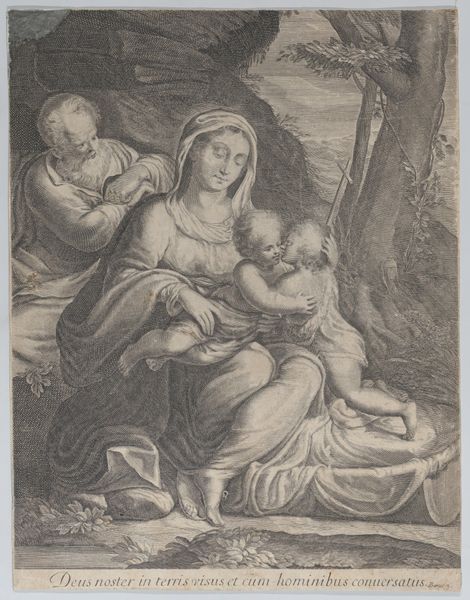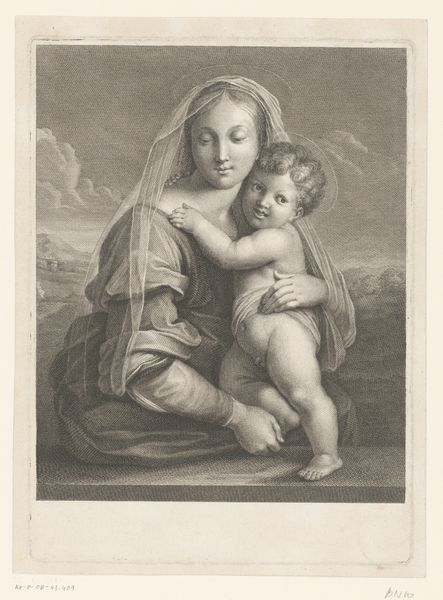
print, engraving
#
baroque
# print
#
figuration
#
engraving
Dimensions: height 328 mm, width 224 mm
Copyright: Rijks Museum: Open Domain
Editor: So, here we have "The Holy Family with Saint John the Baptist," a print made sometime between 1747 and 1773 after a painting by Annibale Carracci. It's a Baroque engraving, currently held at the Rijksmuseum. There is this almost performative sentimentality that is immediately off-putting to me. How do you interpret this work? Curator: I appreciate you pinpointing that "sentimentality," because it serves as an entry point into understanding how images like this actively participated in shaping gender roles and familial structures within the religious and political landscapes of 18th-century Europe. Note the poses: the Virgin Mary's downcast gaze suggests humility, while her role as caregiver is foregrounded. Do you see how this constructs an image of idealised motherhood? Editor: Absolutely. It's a very controlled image, presenting a very specific idea of what a family *should* be. Almost like propaganda. Curator: Precisely! The idealization of the Holy Family wasn’t merely about religious devotion, it was intertwined with power structures and societal expectations. Think about the limited roles afforded to women at the time. Doesn't this imagery subtly reinforce those constraints by presenting motherhood as their primary, almost *sacred*, duty? Editor: That’s a perspective I hadn’t fully considered. It almost feels…manipulative. The tenderness is a tool. Curator: Indeed. And if we look at the absence of women artists at the time, or how the Baroque period has traditionally been framed, we see just how the stories we are told and *who* tells those stories has bearing on whose vision of the world we consider as the cultural or artistic default. Editor: It reframes the entire experience of looking at the print. It feels far more active now – like a direct conversation about the role of women. Curator: Exactly. Hopefully, it reminds us to critically examine how seemingly benign images contribute to the broader narratives that shape our understanding of gender, identity, and power even today.
Comments
No comments
Be the first to comment and join the conversation on the ultimate creative platform.
